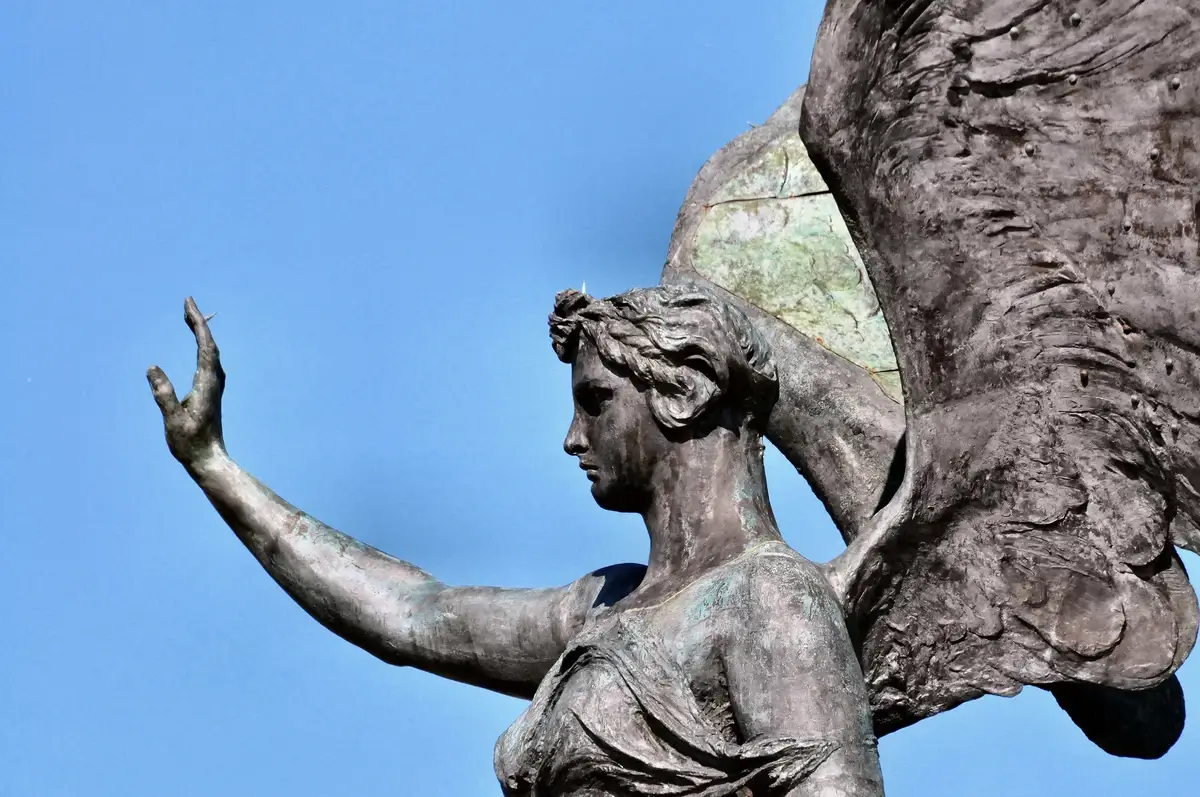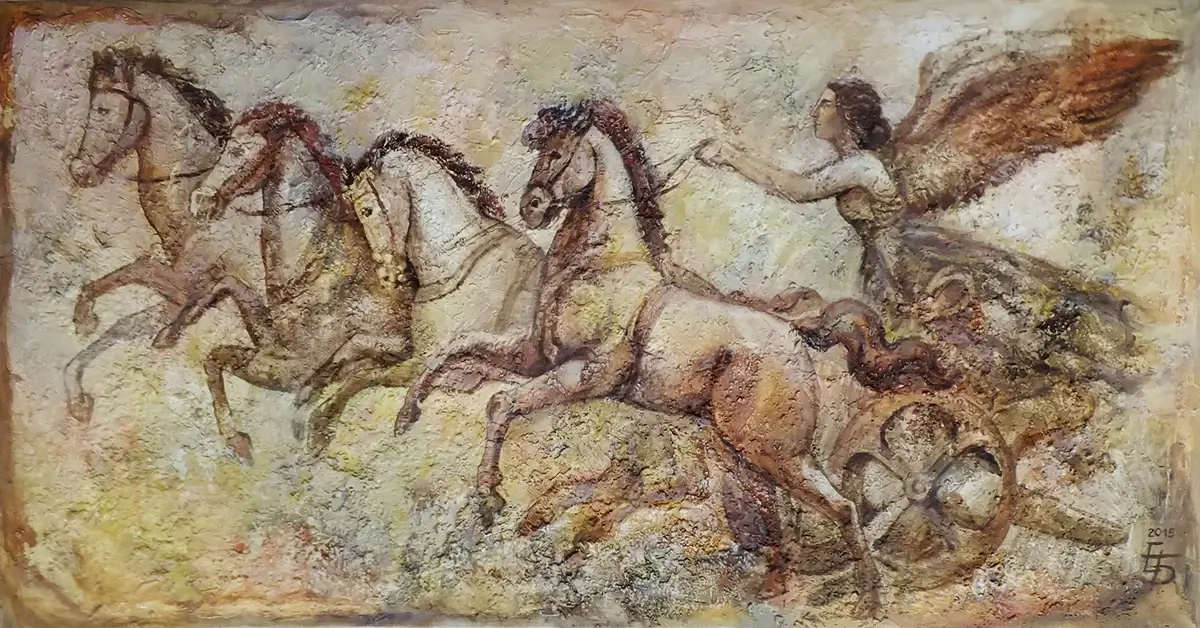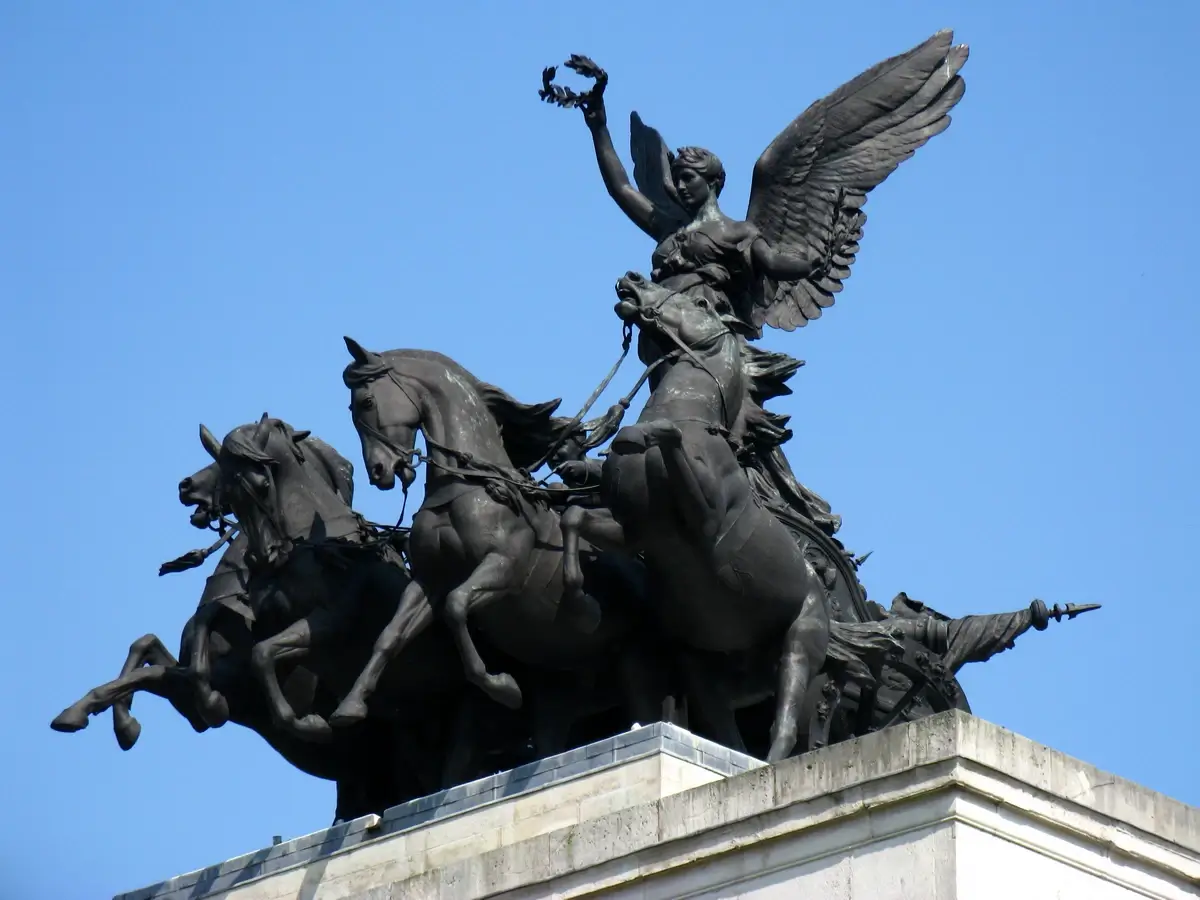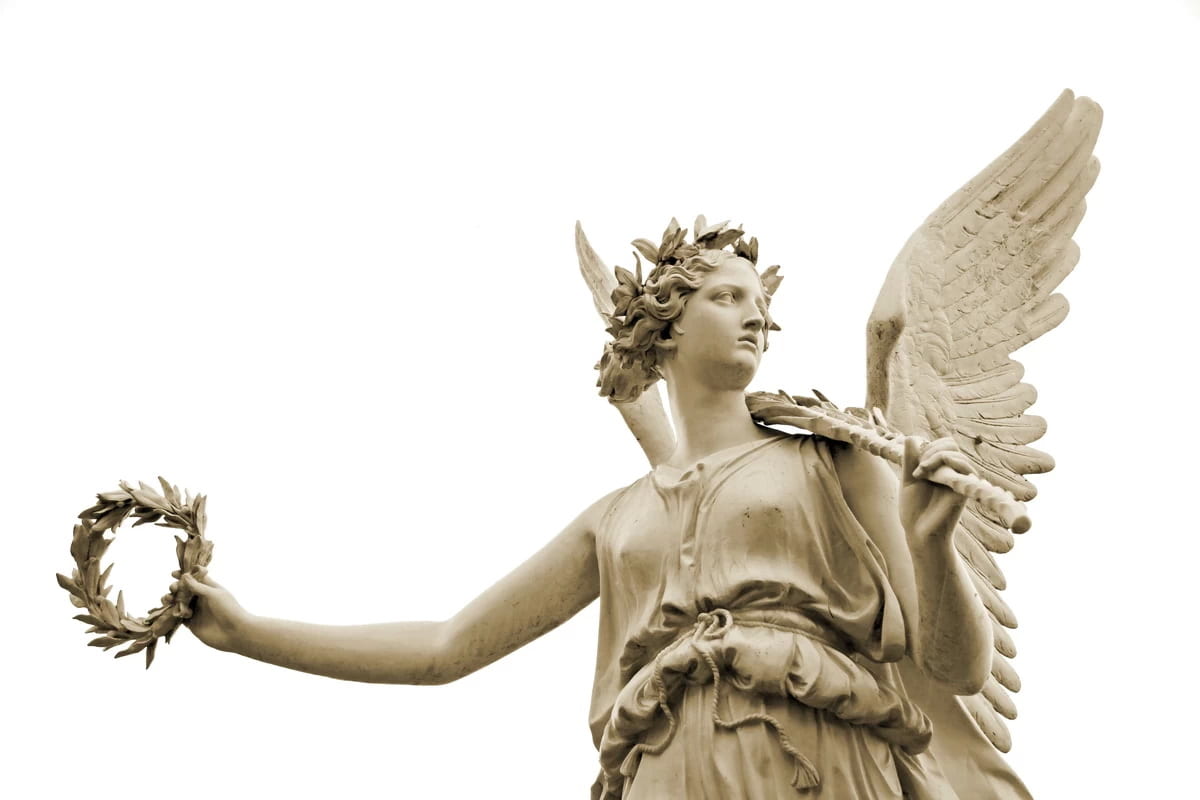Hey there, history enthusiasts and mythology buffs! If your only association with “Nike” is sneakers and sportswear, prepare for a divine upgrade. Say hello to Nike, the Greek goddess of victory who’s been kickin’ it with the Olympians way before Michael Jordan got his first pair of Airs.
This goddess isn’t just about fly kicks; she’s the real deal in Greek mythology. And yeah, she’s got wings, but not the Red Bull kind.
From temples to family drama, get ready to discover why Nike has been turning heads long before she turned into a logo. So buckle up, because this is gonna be a fast and fun victory lap through some serious old-school glam!
1. Not Just a Shoe Brand, Folks!
When someone says “Nike,” most folks’ minds dart straight to sportswear, Michael Jordan, or that iconic swoosh. But let’s press the rewind button and go way, way back. Before it was emblazoned on gear, Nike was the Greek goddess of victory, a divine figure in ancient Greek religion who embodied success in war, athletics, and you guessed it—life itself.
Fast-forward to modern times, and her essence gets bottled up into a logo. Isn’t it ironic that a goddess known for speed and strength has become a household name in sportswear? That’s what you call branding genius!
2. Daughter of Pallas and Styx
Nike’s lineage is like a “who’s who” of Greek mythology. She’s the offspring of Pallas, a Titan with a knack for warfare, and Styx, the goddess of the most famous river in the Underworld. No wonder Nike’s got her game face on; she comes from a family that knows both the art of battle and the solemnity of death.
The river Styx is so important in Greek myths that it’s the river you cross to enter the Underworld. Imagine the pressure at family reunions, eh?
3. Winged but Grounded
Nike’s wings aren’t just for show; they symbolize the speed and agility of victory. Whether she’s sweeping down over battlefields or arenas, she’s there in a flash to crown the winners. However, not all versions of Nike come with wings intact. Some stories say her wings were clipped to keep her close to Zeus, ensuring that victory wouldn’t stray too far from his reach.
Clipping her wings was like a divine insurance policy for Zeus. It’s kinda like saying, “I trust you, but not enough for you to fly away from me.” Classic relationship issues, even for gods and goddesses.
4. Roman Alter Ego: Victoria
Say “ciao” to Victoria, Nike’s Roman counterpart. When the Romans adopted Greek mythology, they made sure to bring Nike into their pantheon, but under a new name. Victoria carried the same essence as Nike, serving as the embodiment of victory, but with an Italian twist.
Like a popular actor reprising their role in a spinoff series, Nike’s spirit lived on in Victoria. Whether gracing the Roman battlefields or being worshipped in temples, Victoria was Nike 2.0, compatible with Roman sensibilities and just as compelling as the original.

mbell1975 / Flickr
5. Temples for Days
When you’re as legendary as Nike, you don’t just get fan mail; you get temples built in your honor. Now, while she might not have temples on every street corner like some of her fellow gods, the ones she does have are total show-stoppers. For instance, the Temple of Athena Nike in Athens? That’s right; Nike shares space with her pal Athena.
These temples weren’t just for Sunday morning rituals; they were centers of ancient Greek religion, full-on expressions of awe towards the divinities who gave people a fighting chance in life and war.

Image by wirestock / Freepik
6. Part of the Zeus Squad
You can’t sit with us! Or, well, maybe you can if you’re Nike. See, she’s basically the VIP in Zeus’s entourage. This Greek goddess of victory is often depicted beside Zeus, sometimes even in his hand. Yeah, she’s kind of a big deal.
Nike wasn’t just a winged trophy girl; she was Zeus’s constant companion in various tales of Greek mythology. Having the Goddess of Victory by your side? Now that’s what you call a power move.
7. Bringing “Good News”
Ever wondered where the word “evangelize” comes from? Dust off those etymology books, folks, because “euangelion,” the Greek word for “good news,” is partly inspired by our gal Nike. How’s that for spreading positivity?
Her name itself has roots in the Greek word “nikē,” which means victory. So, in a sense, every time the Gospel shares good news, it’s echoing an ancient call of triumph, a tip of the hat to the Greek goddess of victory. Who knew religious linguistics could be this cool?
8. Symbol of the Olympics
Get ready for this: the ultimate athletic showdown, the Olympics, nods to Nike big time. The Olympic medals often feature Nike, the Greek goddess of victory, as the ultimate tip-of-the-hat to winners. After all, who better than the Goddess of Victory to adorn the symbol of sporting triumph?
It’s like the circle of life but for athletics. From ancient Greek games to modern competitions, Nike’s been the go-to symbol for supreme human achievement. Because, let’s face it, if you’ve got Nike on your side, you’re already winning.

Image source: mavink.com
9. All About that Chariot
Move over, Fast & Furious! When Nike’s involved, the transport of choice is a divine chariot. She’s often portrayed in a chariot, usually pulled by winged horses because—let’s face it—when you’re a goddess, you can’t do just ordinary.
The chariot symbolizes more than just her love for speed; it’s a divine vehicle often associated with victory processions. Whether in the thick of battle or gracing celebratory parades, Nike’s chariot is the ultimate ride of the gods.

Image by Elena Berezina
10. Nike’s Role in Naval Warfare
Believe it or not, Nike was a naval icon too! She was often portrayed on ship prows, guiding soldiers to victory. This wasn’t just decorative; ancient Greeks believed her presence would grant them divine favor in battles at sea.
The idea was that if you had Nike on your side—literally etched onto the front of your ship—you were not going down without a fight. And most likely, you were going to win that fight because, hello, you had the goddess of victory on your side.
11. Sibling Goals
Ever hear of sibling rivalry? Well, that’s not Nike’s style. She’s got three siblings: Zelus (Zeal), Kratos (Strength), and Bia (Force). Together, they’re like the Fantastic Four of ancient times. Nike and her sibs were the first to stand with Zeus during the Titanomachy, the epic battle against the Titans.
This wasn’t just a family outing; it was a testament to their collective strength and unity. When it comes to supporting each other, this family has quite the divine track record.
12. Nike as a Quadriga Driver
In many artistic renditions, Nike is depicted as the charioteer of a quadriga, a four-horse chariot. Talk about riding in style! These depictions were symbolic representations of the speed and strength needed to attain victory.
Being a divine charioteer wasn’t just for show; it was a physical embodiment of her dominion over triumph and success. If you won, you could thank Nike for steering the metaphorical horses of victory your way.

Image source: Wikimedia Commons
13. A Goddess of Democracy
In the political roller coaster of ancient Athens, Nike stood tall (or flew high) as the go-to symbol for democratic triumphs. Not content with merely presiding over battles and athletic competitions, Nike was also considered the embodiment of successful public decisions. When the Athenians ousted their last tyrant, she became the celestial stamp of approval for the dawn of a new democratic era.
So, if you thought democracy was a human-only affair, think again. In Athens, democratic victories were heavenly endorsed by Nike herself, making her the original spirit animal for civic empowerment. This wasn’t just a political movement; it was a divinely backed revolution.
14. Divine Sculptor’s Muse
Nike has been a muse not just for athletic brands but also for chisel-wielding geniuses of ancient times. The renowned sculptor Paeonius, for instance, chose her as the subject for his masterpiece at Olympia. It was so stunning that it was like Nike herself had landed in marble form, wings and all.
Paeonius wasn’t just whacking at a block of stone; he was telling a tale through his art. With Nike as his subject, he managed to capture the essence of victory in a single, awe-inspiring pose, right as she lands on a ship’s prow. Sculpting skills for the win!
15. Goddess of Many Names
What’s in a name? When it comes to Nike, a lot actually. She wasn’t just Nike the “Victorious”; she had titles that emphasized different aspects of her divine resume. For instance, she was also called “Nike of the Trophies” and “Nike the Triumphant.”
Each epithet had its roots in a specific aspect of her role as the Greek goddess of victory. It’s like having multiple social media handles, each for a different vibe. Whether for battle, sports, or just life achievements, Nike had an alias for it!
16. Divine Cameos
Now, Nike wasn’t a diva who insisted on her own show; she was more of a co-star. While she may not have headlined any myths, she made notable cameos in the stories of other legendary figures. Ever heard of Bellerophon? Nike was there to pat him on the back when he defeated the Chimera.
Sure, she may not have been the main act, but whenever a hero or an entire city needed that extra push toward victory, Nike was the special guest star, ensuring a happy ending.
17. Nike and the Nikes
If you thought the connection between the Greek goddess of victory and the shoe brand was a mere coincidence, think again. Phil Knight, the co-founder of Nike Inc., deliberately named the company after the goddess to symbolize victory and strength.
But here’s the kicker: the very first line of Nikes almost got christened “Dimension 6.” Now, imagine running a marathon in your fresh pair of Dimension 6s. Doesn’t have quite the same ring to it, does it?
18. The Ultimate Sacrifice
In Greek mythology, sacrifices were a big deal, and Nike was often the recipient. But she wasn’t the type to demand a dozen cows. Instead, the sacrifices to Nike were typically offerings of thanks after a battle or competition, small tokens compared to the scale of a victory.
It wasn’t about the grandeur; it was about the sentiment. Tributes to Nike were a way to acknowledge that strength and victory are gifts, not givens.

Ancient Greek altar. Image source: thearchaeologist.org
19. Symbols in the Stars
Alright, astrology enthusiasts, get this: Nike even has her own star show. She’s represented by the constellation named “Winged Victory,” making her not just an earthbound entity but a celestial one too.
The stars forming this constellation were seen as a tribute to her and her divine qualities. So the next time you’re stargazing, keep an eye out for Nike’s astral signature!
20. Forever Young
In a pantheon full of mature deities, Nike stands out for her eternal youth. While many gods and goddesses in Greek mythology are depicted as adults, Nike is often portrayed as a youthful figure.
Why? Her eternal youth symbolizes the everlasting nature of victory. Success, triumph, and accolades never grow old, and neither does the Greek goddess of victory who personifies them. Nike reminds us that victory is a timeless endeavor, one that spans both the mortal and the divine.
FAQ
What is goddess Nike known for?
Nike is the ancient Greek goddess of victory. She is often depicted as a winged figure and is commonly associated with triumphs in both war and athletic competitions.
What is a myth about Nike goddess?
One of the most well-known myths about Nike is her role in the Titanomachy, the battle between the Titans and the Olympian gods. She fought on the side of the Olympians and was a close companion to Zeus, the king of the gods. Her presence was thought to bring about victory.
What is Nike goddess’s special powers?
Nike doesn’t have a long list of special powers like some other gods and goddesses. However, she has wings that allow her to fly, and she is often considered a symbol or embodiment of victory. Her mere presence is believed to inspire triumph.
What does Nike stand for?
The name “Nike” stands for “victory” in ancient Greek.
How did Nike get its name?
The modern sportswear brand Nike was named after the goddess Nike as a symbol of victory, speed, and movement, capturing the spirit that the company wanted to represent.
Did the goddess Nike have a nickname?
As far as historical records indicate, Nike did not have a specific nickname. She was simply known as Nike, the goddess of victory.
What is the weapon of the goddess Nike?
Nike is not primarily known for wielding a specific weapon. She is more commonly seen holding a palm branch, a wreath, or a trophy, symbols of victory rather than warfare.
Is Nike goddess good or bad?
In ancient Greek mythology, Nike is generally considered a positive figure symbolizing victory and triumph. She is neither good nor bad in a moral sense but represents the concept of winning.
What is Nike the goddess’s weakness?
There is not much information about any specific weaknesses that Nike might have had. Given her role as a symbol of victory, the concept of “weakness” doesn’t really apply to her in the traditional myths.
What was the goddess Nike’s personality?
The myths don’t provide a detailed personality profile for Nike, but given her role as a symbol of victory, she would likely be seen as confident, inspiring, and triumphant.







